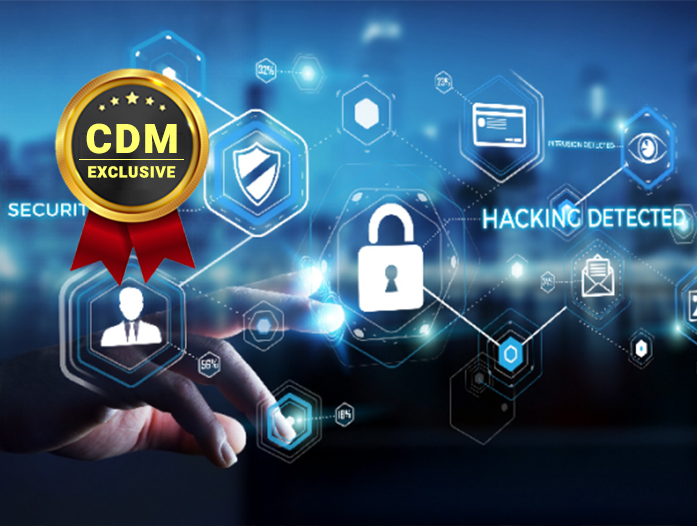The cybersecurity environment is rapidly evolving. Meanwhile, technological advancements are steadily improving the ability for cyber criminals and hackers to exploit data security flaws.
By Nicole Allen, Marketing Executive, Salt Communications
The cybersecurity environment is rapidly evolving. Meanwhile, technological advancements are steadily improving the ability of cybercriminals and hackers to exploit data security flaws. The ever-increasing scope of data breaches and cybersecurity threats should be a major source of concern for all types of organizations.
No one could have predicted the holes in network security postures that the 2020 coronavirus pandemic has revealed with the increase of employees working from home. Unsecured home networks, BYOD (bring-your-own-device) policies, and compartmentalized operations turned previously evident hazards on corporate networks into invisible, hidden threats on a wider range of networks. As a result of the increasing attack surface even more than usual phishing vishing, and ransomware assaults were launched. So in this article Salt Communications are going to explain five ways to protect your workplace from cybersecurity threats.
- Increase enterprise security protection
Mobile workplaces can boost productivity and access to work-related resources, but they also raise the danger of data leaks due to apps and services like email, social media, and cloud access. Maintaining a more secure organization while enabling mobile productivity requires creating a safer environment for employees to work remotely.
The risks to organizations from actions or inactions of employees come from a wide range of factors: such as human error – this can include sending sensitive information or personal data to the wrong person by accident. There’s also the issue of system misconfiguration, which can lead to unauthorized access if sensitive data isn’t adequately secured, encrypted, or password protected. It’s also crucial to consider the loss of sensitive information-containing devices or documents.
Many businesses do not take data security as seriously as it should be. They have weak passwords, important files that aren’t encrypted, and servers that aren’t configured correctly. More than 4 billion data records containing sensitive information were allegedly compromised in the first six months of the year in 2021 as a result of this negligent attitude.
- Enable secured collaboration for business communications
Since the recent crisis-forced transition to remote work, there has been an increase in the use and reliance on communication tools. Employees across organizations are looking for an effective, secure approach to continue collaborating throughout the business now that they are dispersed in various remote locations. Migration to business communication platforms as a replacement for in-person and other technical communication has become a major goal for a business’s digital transformation.
Companies become more vulnerable to major security concerns when more communication – and business-critical information – is shared across cloud platforms like zoom and Teams. As we saw with COVID-19, there has been an increase in hacks, including targeted Teams attacks using impersonating Teams notifications and GIFs vulnerabilities.
With the likes of Teams in terms of external vulnerabilities, federated access to external users is enabled by default when Teams is implemented out of the box. This means that anyone in the world can send an email to a user, request to chat with them, or exchange files with them, exposing the individual, and hence their entire organization, to messages that are frequently hostile in nature.
Whereas, if an organization uses a closed communications platform such as Salt they don’t leave themselves open to these types of threats. Salt Communications recognizes that encryption alone isn’t enough to keep an organization’s data safe. Salt delivers a highly secure platform that gives the same convenient user experience as consumer apps, but in a safer and more secure manner, allowing the business to maintain complete, centralized management of the system at all times and therefore ensure complete control.
- Ensure you are reducing malware exposure
Malware infections are frequently linked to user mistakes. Phishing and spoofing schemes have advanced to the point where they can trick users into downloading innocuous-looking apps that contain hidden attacks by sending them fake emails from trusted brands. These emails lure users in with fake news stories, or very personalized offers, which leaves themselves and their companies open to attack. As well as this in the past year, there has been an increase in ‘smishing’ attacks which are threatening businesses worldwide. Smishing is a form of ‘phishing’ using SMS or text messages instead of emails to entice recipients to click on fake links which download malware onto their device.
On their own devices, users cannot be prevented from surfing the web, utilizing social media, or accessing personal email. How can you assist them in performing these routine duties in a safer manner? Request that all staff read basic instructions and/or participate in training that covers common malware attack strategies.
Employers should also teach users to double-check URLs in emails to ensure they are accurate, relevant, and trustworthy. Also, think about deploying email security solutions that can help prevent malware and phishing attacks from reaching employees’ inboxes. It makes no difference if you have the world’s most secure security system. It only takes one inexperienced employee to be deceived by a phishing attempt and hand up the information you’ve worked so hard to safeguard. Make sure you and your staff are both aware of these specific email phishing examples, as well as all of the warning indicators of a phishing attempt.
- Back everything up regularly
What if your organization already has a backup system in place? First and foremost, kudos on a job well done; but, the task does not end there. It’s critical to test your backup recovery process on a frequent basis. It’s pointless to back up data if you can’t recover it. You’ll know if your backup procedure is working properly if you run that test on a frequent basis. It’s not uncommon for a backup drive to run out of disc space for no one to notice.
Performing a proper backup can be a challenging task. Therefore, backups should be included in your business continuity plan. A business continuity plan, according to Travelers Insurance, is “a proactive plan to avoid and manage risks associated with a disruption of operations.”
It outlines the measures that must be performed before, during, and after an event in order for an organization’s financial viability to be maintained. That implies that if your business systems are affected, whether by a fire or flood in the office or, more recently, a cyber-attack, you’ll have a plan in place to minimise the impact on business performance. Backing up your company’s data could mean the difference between surviving a cyber attack and going out of business.
- Manage all organizational devices
Security concerns are growing as the Bring Your Own Device (BYOD) trend rises and the use of Software-as-a-Service (SaaS) applications spreads. Organisations can begin with user education on devices is a simple but crucial step in securing them. It guarantees that every employee in your company is informed of the best procedures for safeguarding your data. While it starts with onboarding, teaching your staff how to safeguard their devices is a continuous activity.
Mobile security should be at the top of any company’s cybersecurity priority list, especially in an era where remote working has become the standard and isn’t going away anytime soon. Many of the companies and organizations in which Salt Communications works have experienced a surge in mobile usage for communications and day-to-day tasks. Often, businesses will consider creating a mobile security policy that outlines what users should and should not do while using their mobile devices. Other businesses have implemented MDM/UEM systems to lock down devices and add an extra layer of security to company-issued devices that employees use.
Allowing employees to be flexible does not have to mean jeopardizing the security of your cybersecurity, mobile security, and corporate communications. You can provide your employees the freedom to work anywhere, anytime with adequate planning, the correct tools, and education while avoiding risk. Our team of professionals has worked with a variety of organizations to assist them in dealing with cybersecurity issues.
To discuss this article in greater detail with the team, or to sign up for a free trial of Salt Communications contact us at [email protected] or visit our website at saltcommunications.com.
About Salt Communications
Salt Communications is a multi-award-winning cyber security company providing a fully enterprise-managed software solution giving absolute privacy in mobile communications. It is easy to deploy and uses multi-layered encryption techniques to meet the highest of security standards. Salt Communications offers ‘Peace of Mind’ for Organisations who value their privacy, by giving them complete control and secure communications, to protect their trusted relationships and stay safe. Salt is headquartered in Belfast, N. Ireland, for more information visit Salt Communications.
About the Author
 Nicole Allen, Marketing Executive at Salt Communications. Nicole has been working within the Salt Communications Marketing team for several years and has played a crucial role in building Salt Communications’ reputation. Nicole implements many of Salt Communications’ digital efforts as well as managing Salt Communications’ presence at events, both virtual and in-person events for the company.
Nicole Allen, Marketing Executive at Salt Communications. Nicole has been working within the Salt Communications Marketing team for several years and has played a crucial role in building Salt Communications’ reputation. Nicole implements many of Salt Communications’ digital efforts as well as managing Salt Communications’ presence at events, both virtual and in-person events for the company.
Nicole can be reached online at (LINKEDIN, TWITTER or by emailing [email protected]) and at our company website https://saltcommunications.com/


